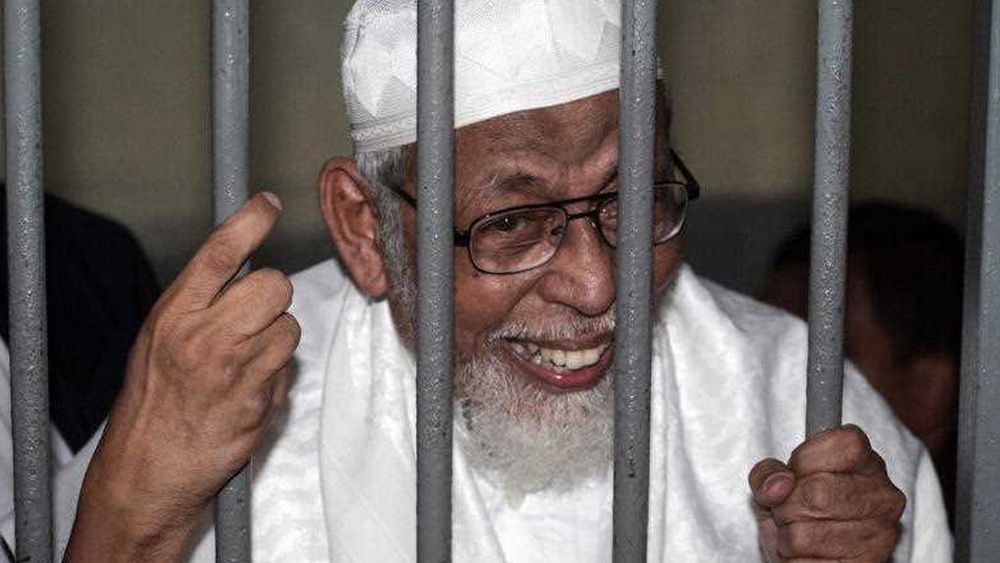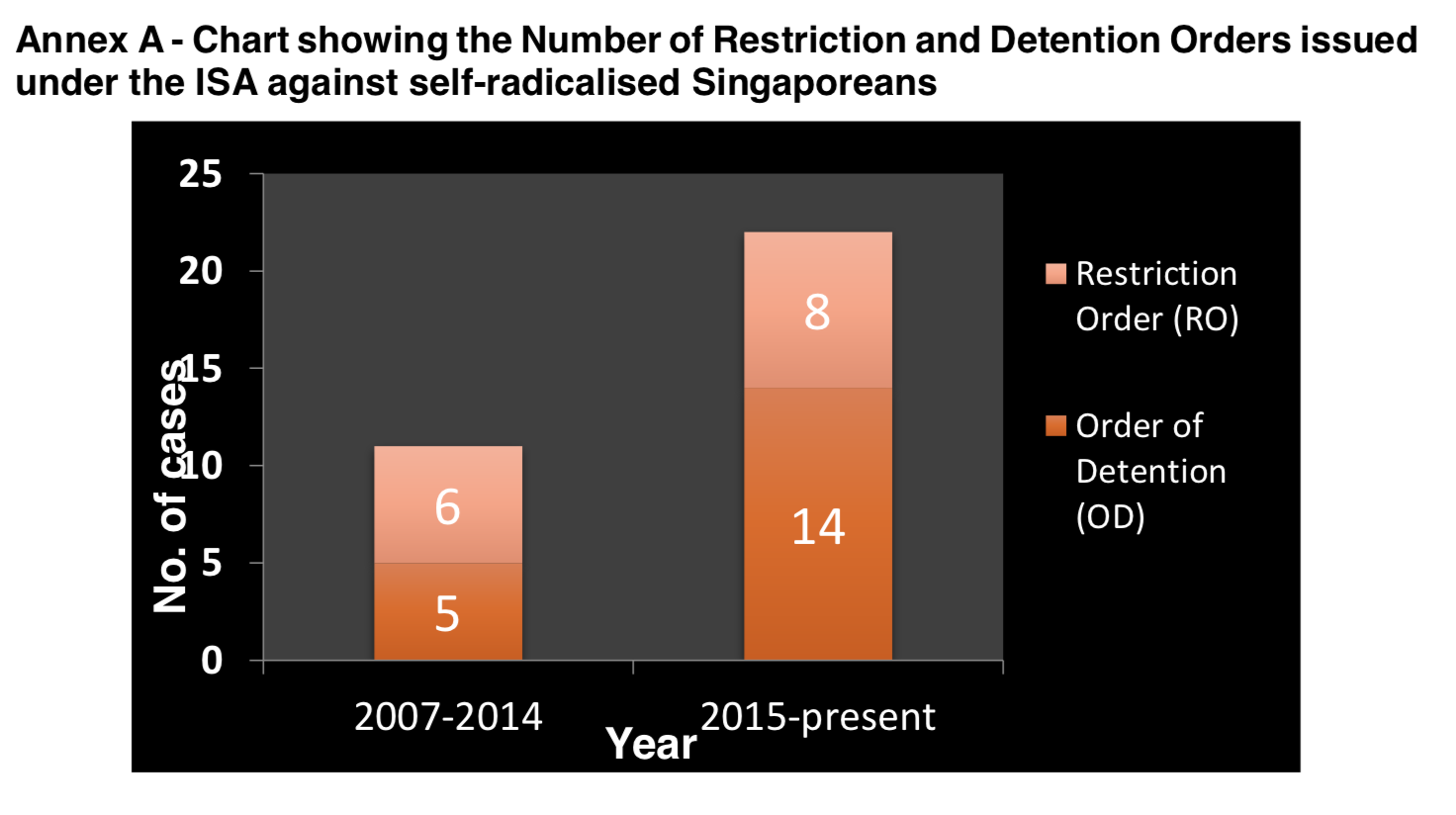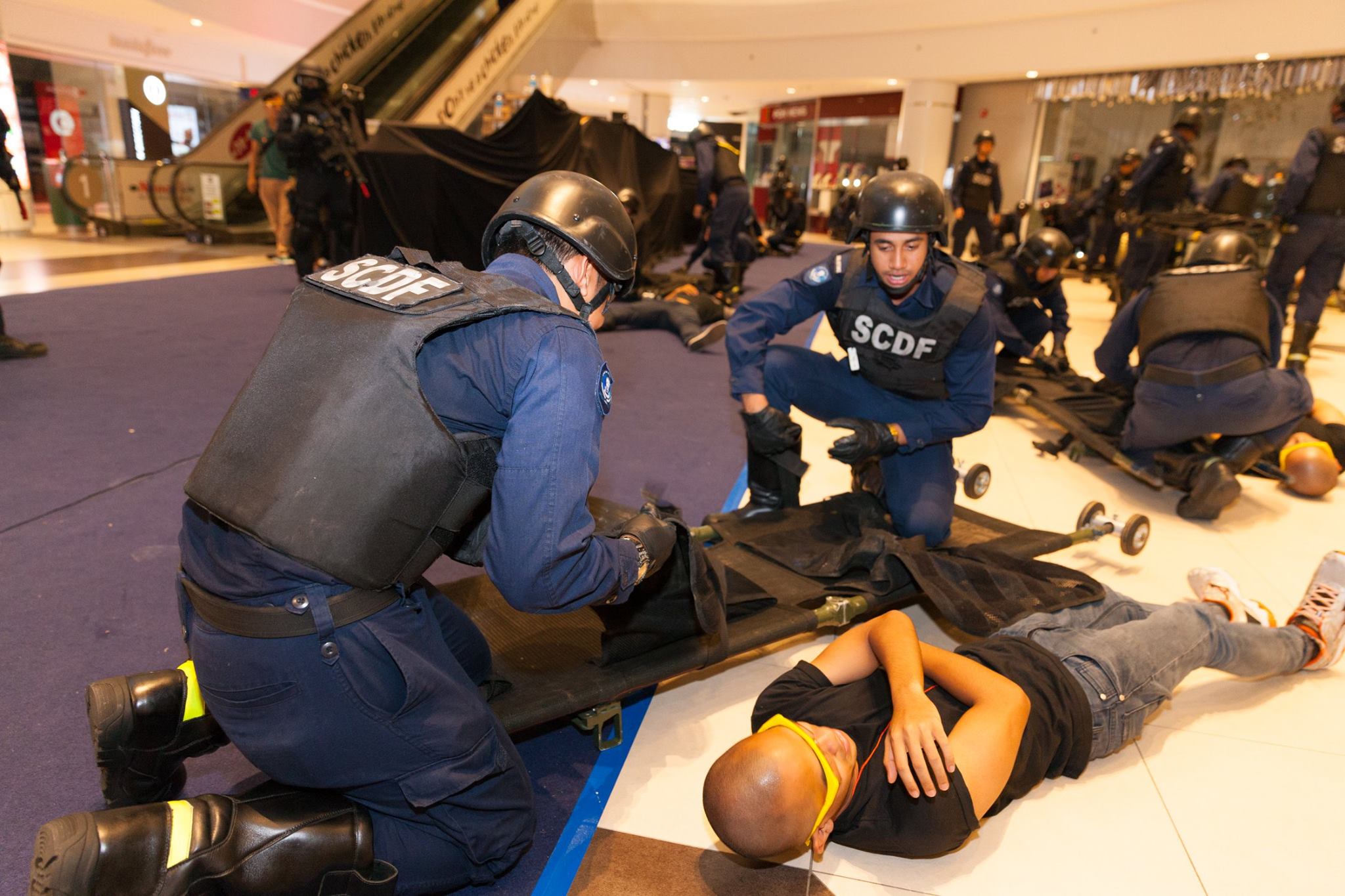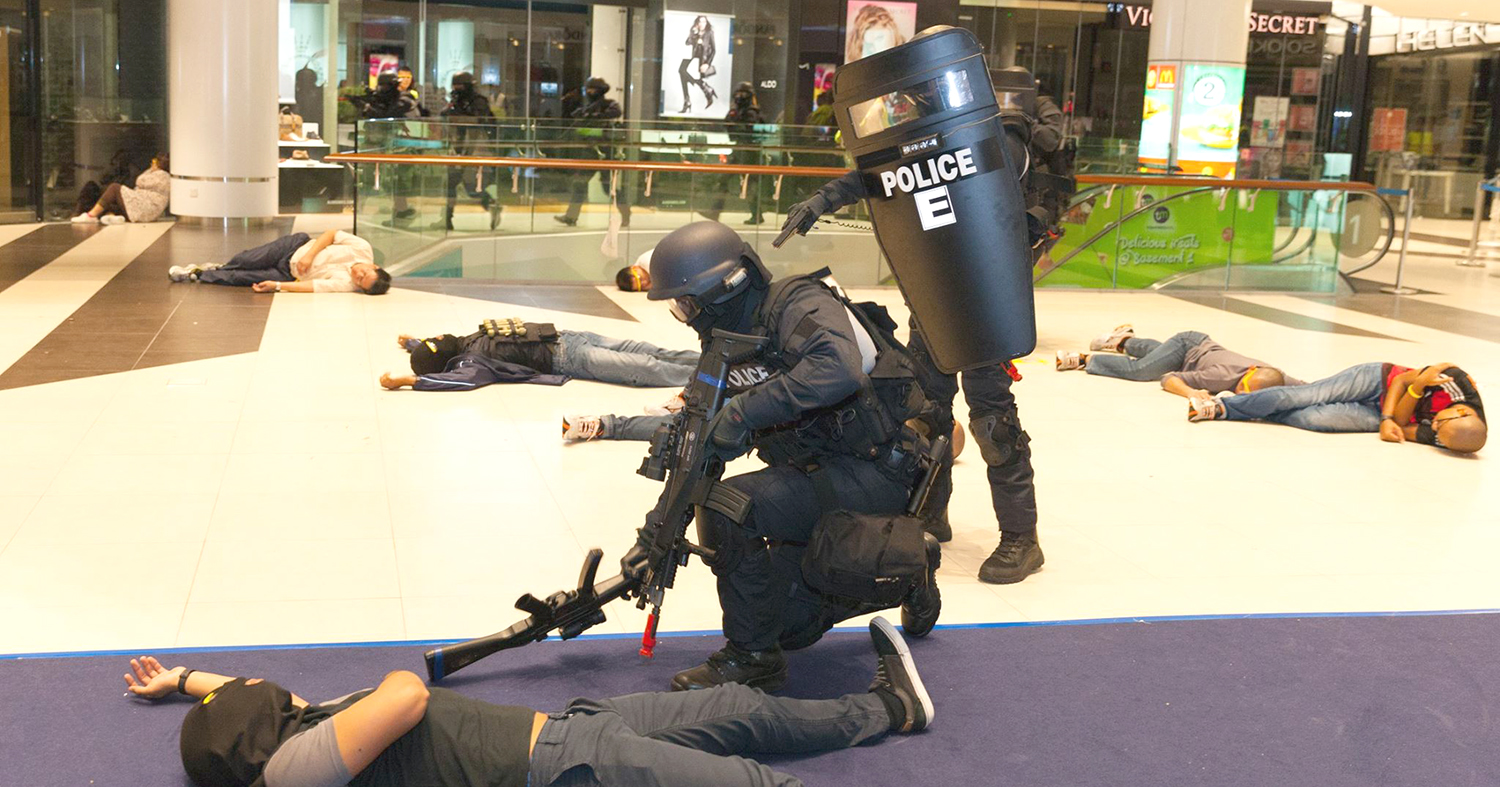The last time Singapore came close to a Islamic State of Iraq and Syria (ISIS)-linked terror attack was two incidents in 2016 -- a planned rocket attack on Marina Bay Sands from Batam and an unnamed threat by foreign militants.
That was less than two years ago. While it may seem peaceful now, Singaporeans shouldn't be lulled into a false sense of security.
That is the gist of the Ministry of Home Affairs' (MHA) Singapore Terrorism Threat Assessment Report 2019. Here's are the main takeaways from the report.
ISIS is still the most pressing threat to Singapore and the region
According to MHA, there is currently "no credible intelligence of an attack being planned against Singapore". As of 2017, ISIS had lost most of its territory thanks to a concerted global effort to defeat it.
However, the ISIS threat persists.
This is because ISIS is attempting to claim Southeast Asia as part of its global caliphate through ISIS-linked groups and sympathisers in the region.
MHA says that the terror organisation has started to refer to Southeast Asia and East Asia as its Wilayat Sharq Asiyya or East Asia Province in its propaganda.
One such example of an ISIS-linked group is Jemaah Ansharut Daulah (JAD) in Indonesia.
JAD was responsible for the 2018 family suicide bombings in Surabaya which took the lives of 28 people.
Over in Malawi City in the Philippines, ISIS militants laid siege to the city in May 2017. The city was only freed five months later.
According to MHA, a Singaporean man, Imran Kassim, had intended to join the siege in 2017. He was detained under the Internal Security Act (ISA).
Closer to home, Malaysian authorities have arrested more than 80 militants and disrupted four terrorist plots in 2018 alone.
Given ISIS' heavy territorial losses in Syria and Iraq, MHA says there is a possibility that Southeast Asian ISIS fighters might return to the region and carry out lethal attacks.
Additionally MHA's report cautioned that the release of terrorist prisoners in the region could worsen the threat of a Southeast Asia attack.
This warning comes days after Indonesia announced that it will grant early release to Abu Bakar Bashir, the leader of a splinter cell which originated from Jemaah Islamiyah.
 Abu Bakar Bashir. Image via 9News.
Abu Bakar Bashir. Image via 9News.
22 Singaporeans were handled under the ISA since 2015
Back in Singapore, MHA warns that ISIS' "virulent ideology" persists in cyberspace and can rally supporters here. This type of ideology can be spread online or via communications apps like Telegram.
Since 2015, 22 self-radicalised Singaporeans were dealt with under the ISA.
On the other hand, Singapore identified only 11 radicalised Singaporeans in the preceding seven years (2007 to 2014).
 Chart via MHA Terrorism Threat Assessment 2019.
Chart via MHA Terrorism Threat Assessment 2019.
MHA clarified that not all of these cases are ISIS-related, but in all cases, Singaporeans were self-radicalised by "virulent ideology".
Some attempted to join armed conflict overseas.
Enhanced counter-terrorism capabilities
In response to security threats, the government has deployed patrol teams such as the Police Emergency Response Teams (ERTs), Rapid Deployment Troops (RDTs), and In-Situ Reaction Teams (IRTs) at public places and iconic areas.
The Police also increased their surveillance coverage by deploying more than 5,000 cameras in public areas like neighbourhood centres and hawker centre.
Another 6,000 cameras will be installed island-wide over the next few years.
Multi-agency exercises like Exercise Northstar X are conducted periodically to test emergency responses to terror attacks.
 A multi-agency counter terrorism attack in 2016. Image via Singapore Police Force's Facebook page.
A multi-agency counter terrorism attack in 2016. Image via Singapore Police Force's Facebook page.
Top image is of a counter-terrorism exercise via Singapore Police Force's Facebook page.
If you like what you read, follow us on Facebook, Instagram, Twitter and Telegram to get the latest updates.

